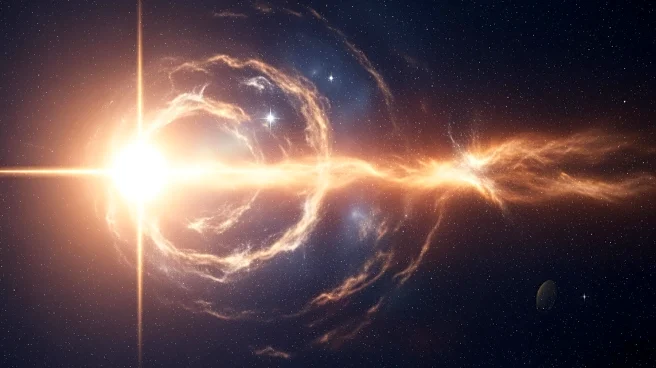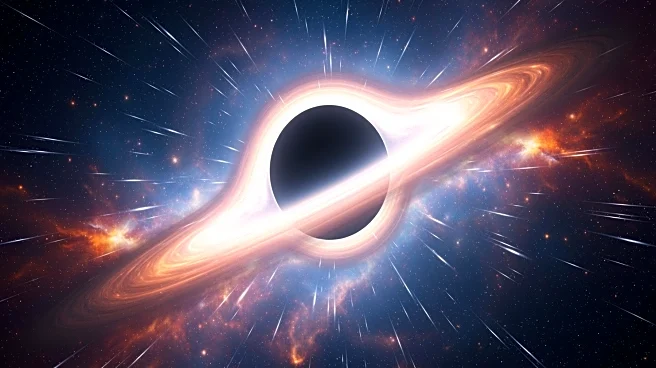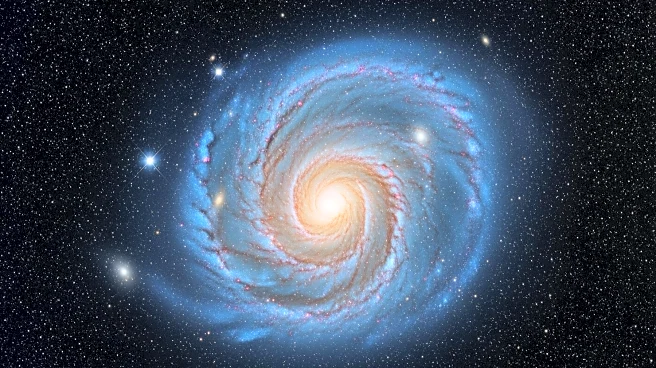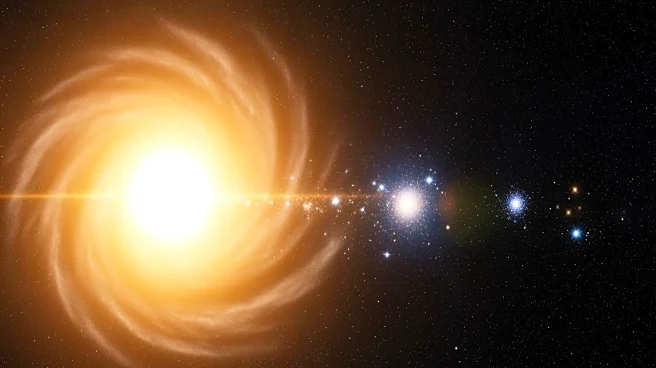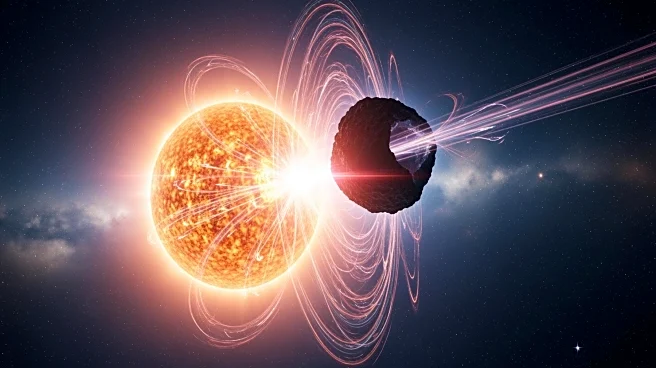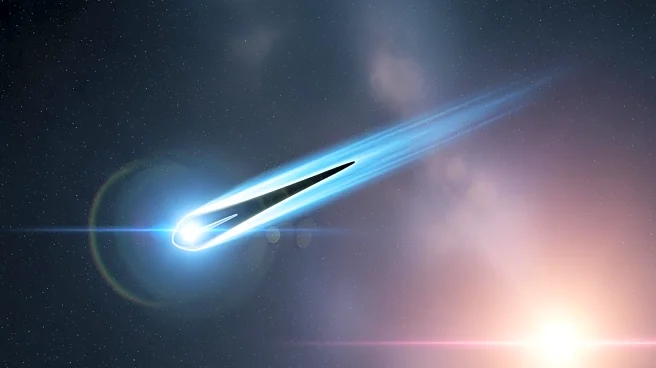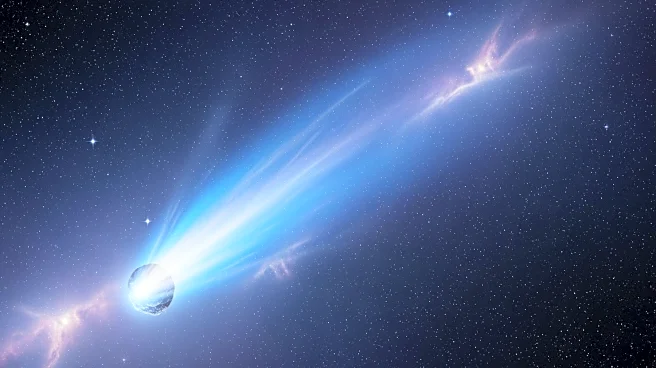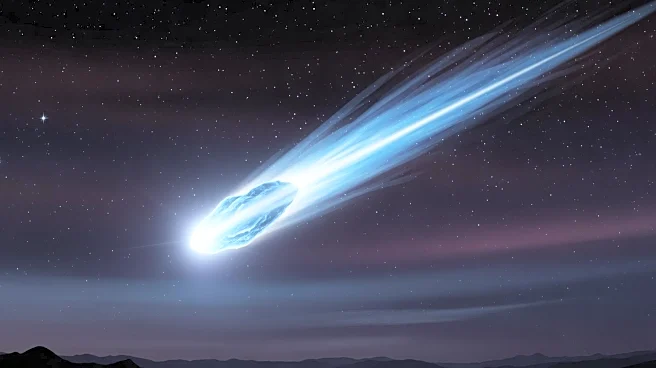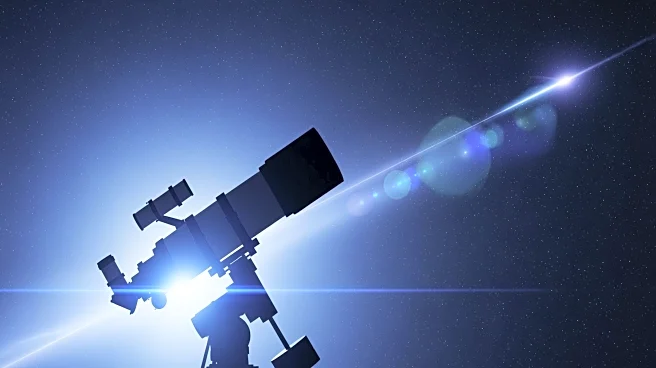What's Happening?
Recent research led by Amir Siraj from Princeton University has provided new insights into the early life of the Sun, suggesting it left its birth cluster relatively quickly. By examining the orbits of distant solar system objects known as sednoids, the study
proposes that the Sun spent less than 50 million years in its birth cluster. The sednoids, which are minor planets that never come within 40 astronomical units of the Sun, have orbits that are tightly aligned with the ecliptic plane. This alignment implies that the Sun's early interactions with other stars in its cluster were limited, allowing it to escape without significant disruption to its proto-planetary system.
Why It's Important?
Understanding the Sun's early departure from its birth cluster is crucial for comprehending the formation and evolution of the solar system. The study's findings suggest that the Sun's quick exit minimized gravitational interactions that could have scattered or ejected objects in the solar system. This research provides a stronger constraint on the Sun's early environment, which is essential for models of solar system development and the behavior of distant solar system objects.
What's Next?
The Vera C. Rubin Observatory is expected to discover thousands of new distant solar system objects in the coming years, which could further refine the constraints on the Sun's early interactions and departure from its birth cluster. These discoveries will enhance our understanding of the solar system's formation and the dynamics of distant objects.
Beyond the Headlines
The study highlights the importance of distant solar system objects in revealing the history of the Sun and its early environment. The alignment of sednoid orbits provides a unique window into the gravitational influences experienced by the solar system during its formative years.
